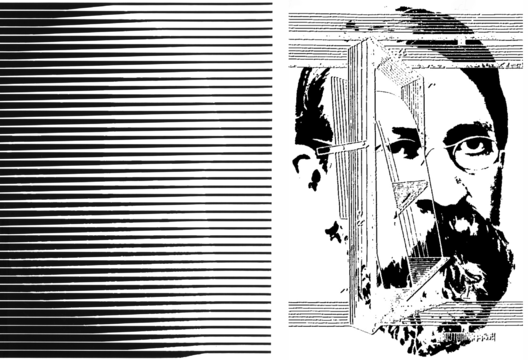Ernst Mach1838–1916
Mach outlined a positivist approach to science, following in the paths of Berkeley and Hume, by arguing that all sciences reduce to sensations. He was convinced that “the foundations of science as a whole, and of physics in general, await their next greatest elucidations from the side of biology, and especially from the analysis of sensations”. In his Contributions to the Analysis of Sensations (1886) he stated: “Thing, body, matter, are nothing apart from their complexes of colours, sounds, and so forth - nothing apart from their so-called attributes”, and these should be studied by introspection. Accordingly, Mach’s positivism differed from that of Auguste Comte (1798-1874), who abhored introspection. However, they shared the Baconian distrust of theorizing, which allowed error to intrude in science. Mach defined a new area of form perception, by correlating the appearance of contours with physical variables. In studying the complexes of sensations that are involved in the perception of forms, Mach prepared the ground for the Gestalt psychologists. However, one striking contrast phenomenon could not be defined so readily: a uniform gradient of luminance from light to dark does not appear uniform - a light band flanks the light border while a dark band is visible to the side of the dark border. These are now called Mach bands and he described them mathematically in terms of the second derivative of luminance change: “What we see are not differential coefficients, which is an intellectual affair, but only the direction of the curve-elements, and the declination of the direction of one curve-element from that of another”. Mach produced the gradients by rotating simply drawn, radiating figures on a disc. They can also be seen in drawings of repetitive ramp-like lines tapering gradually from thick to thin. On the left, Mach’s portrait can be dimly defined within the light and dark bands that surround him: the design was drawn to match the borders of his head, the details of which can be discerned from afar. Some artistic license has been taken in defining the facial features since they are not, strictly speaking, due to Mach bands alone, but they can be seen with an adequate analysis of the sensations. The phenomenon has been utilized intuitively by artists for centuries to enhance the visibility of borders that would be difficult to see otherwise. Earlier, in 1875, he had published a book on the perception of bodily rotation and, on the basis of his experimental results, proposed a hydrodynamic theory of semicircular canal function that is still generally accepted. The rotating and tilting device he made is shown on the right, with a more recognisable portrait. Mach was born in Moravia, then a part of Austria, and obtained a doctorate in physics at the University of Vienna. He was appointed professor of physics at the University of Prague in 1867; at that time Hering was professor of physiology, though their analyses of sensations differed radically. Mach returned to Vienna in 1895 to become professor of the history and theory of the inductive sciences.
